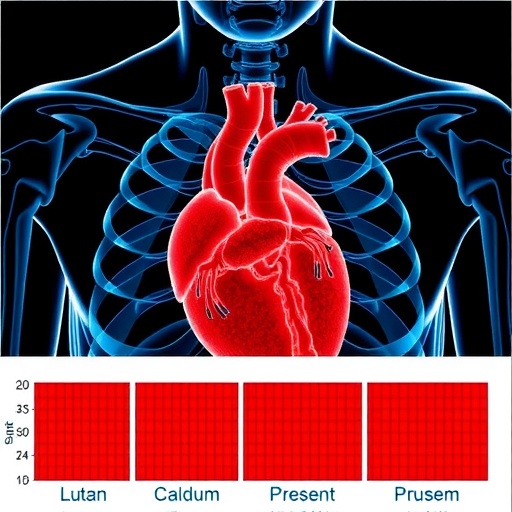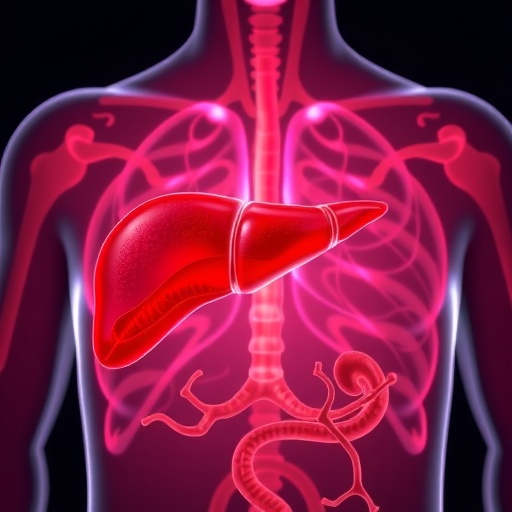A groundbreaking study has shed new light on the predictive power of the American Heart Association’s PREVENT™ risk calculator, demonstrating its ability to accurately identify individuals with arterial plaque buildup and forecast their risk of future heart attacks. This advancement offers a potentially transformative approach to early cardiovascular disease prevention, leveraging real-world clinical data to enhance patient care strategies.
The PREVENT™ risk calculator, launched in 2023 by the American Heart Association, provides an integrative risk assessment for cardiovascular events by estimating the likelihood of heart attack, stroke, and heart failure over the subsequent 10 and 30 years. Unique among risk prediction tools, PREVENT incorporates an array of physiological, metabolic, and social determinants of health, including age, blood pressure, cholesterol, body mass index, Type 2 diabetes status, smoking habits, kidney function, and socioeconomic factors. This multifaceted approach enables a nuanced and comprehensive evaluation of cardiovascular risk.
Central to this study was an analysis of nearly 7,000 adults who underwent coronary computed tomography angiography (CCTA) at NYU Langone Health between 2010 and 2024. CCTA is a sophisticated imaging modality that non-invasively visualizes atherosclerotic plaque within the coronary arteries. Patients receive a coronary artery calcium (CAC) score from this imaging, quantifying calcium deposits as an established marker of coronary atherosclerosis and cardiovascular risk.
The investigators set out to explore the concordance between PREVENT risk scores and CAC scores and to determine whether combining these measures would enhance the accuracy of predicting heart attack risk. The study population—adults aged 30 to 79 with no prior heart disease history—provided a well-characterized cohort to investigate these relationships in a real-world clinical setting.
Results revealed a direct correlation between PREVENT scores and CAC scores. Individuals with low to mildly elevated PREVENT scores corresponded with minimal coronary calcium deposits, reflected by CAC scores of 1 or less, indicating low cardiovascular risk. Conversely, those with moderate to high PREVENT risk levels exhibited significantly elevated CAC scores exceeding 100, marking a higher burden of subclinical atherosclerosis and increased risk of adverse cardiac events.
Critically, when the researchers integrated PREVENT risk calculations with CAC data, they achieved superior predictive accuracy for future heart attacks, outperforming either measure alone. This combined approach successfully identified patients who experienced heart attacks during the follow-up period more precisely, underscoring the complementary nature of physiological risk profiling and direct imaging evidence of coronary artery disease.
The significance of these findings lies in their potential to refine clinical risk stratification and optimize preventive interventions. Dr. Morgan Grams, the study’s corresponding author, emphasized that improved cardiovascular risk prediction facilitates tailored therapeutic decision-making, such as initiating or intensifying cholesterol-lowering regimens. Early identification of patients harboring subclinical arterial plaque enables more timely and aggressive risk-reduction strategies before symptomatic disease manifests.
Incorporating social determinants of health into the PREVENT algorithm represents a meaningful advancement, acknowledging the complex interplay of environmental and behavioral factors in cardiovascular disease development. By embedding these variables alongside traditional clinical parameters, PREVENT may better capture the heterogeneity of patient risk profiles encountered in diverse clinical populations.
Nevertheless, the study also acknowledges certain limitations inherent in its design. The single-center, retrospective cohort predominantly comprised White participants, which may restrict extrapolation of the findings to broader, more ethnically diverse populations. Additionally, the average follow-up duration was relatively short, at 1.2 years, constraining long-term risk assessment. The study also did not assess non-calcified plaques, which can contribute to cardiovascular events but are not captured by CAC scoring.
Furthermore, the cohort consisted exclusively of patients referred for CCTA and CAC scoring by healthcare providers, implying potential preselection bias with a higher baseline cardiovascular risk compared to the general population. Reliance on electronic health records for data extraction, though comprehensive, also introduces the possibility of coding inaccuracies or underreporting of clinical events.
Despite these caveats, the study represents an important step forward in cardiovascular risk prediction science. By validating the real-world applicability of the PREVENT risk calculator in conjunction with CAC imaging, the research offers a blueprint for integrating multifactorial risk assessment into routine clinical workflows. This may ultimately contribute to reducing the incidence of heart attacks and improving population cardiovascular health.
As cardiovascular disease remains the leading cause of mortality worldwide, innovations in risk stratification tools are crucial to guide preventive therapies effectively. The combination of quantitative imaging and personalized risk modeling heralds a future where interventions can be more precisely tailored, minimizing both under- and overtreatment.
Going forward, multicenter studies including diverse demographic groups and longer follow-up periods will be essential to confirm and expand upon these findings. Additionally, incorporating assessments of non-calcified plaque and other emerging biomarkers may further enhance the accuracy and utility of predictive models like PREVENT.
In summary, this study compellingly demonstrates that the PREVENT™ risk calculator is not only reflective of underlying coronary artery calcium burden but also has enhanced predictive capacity when combined with CAC scores for future heart attack risk. These insights are poised to influence clinical guidelines and augment decision-making in cardiovascular disease prevention.
Subject of Research: Cardiovascular Risk Prediction and Coronary Artery Calcium Scoring
Article Title: Real-World Evidence Linking the Predicting Risk of Cardiovascular Disease Events Risk Score and Coronary Artery Calcium
News Publication Date: May 21, 2025
Web References:
PREVENT Risk Calculator: https://professional.heart.org/en/guidelines-and-statements/prevent-calculator
Journal of the American Heart Association: https://www.ahajournals.org/journal/jaha
Coronary Artery Calcium Score: https://www.heart.org/en/health-topics/heart-attack/diagnosing-a-heart-attack/cac-test
References:
DOI: 10.1161/JAHA.124.038991 (https://dx.doi.org/10.1161/JAHA.124.038991)
Keywords: cardiovascular risk, PREVENT risk calculator, coronary artery calcium, CAC score, heart attack prediction, cardiovascular disease, coronary computed tomography angiography, CCTA, atherosclerosis, risk stratification, primary prevention, real-world evidence
Tags: American Heart Association guidelinesarterial plaque buildup detectioncalcium buildup in arteriescardiovascular disease prevention strategiescomprehensive cardiovascular risk assessmentcoronary computed tomography angiographylong-term cardiovascular risk predictionphysiological determinants of heart diseasepredicting heart attack riskPREVENT risk calculator 2023socioeconomic factors in healthType 2 diabetes and heart health





